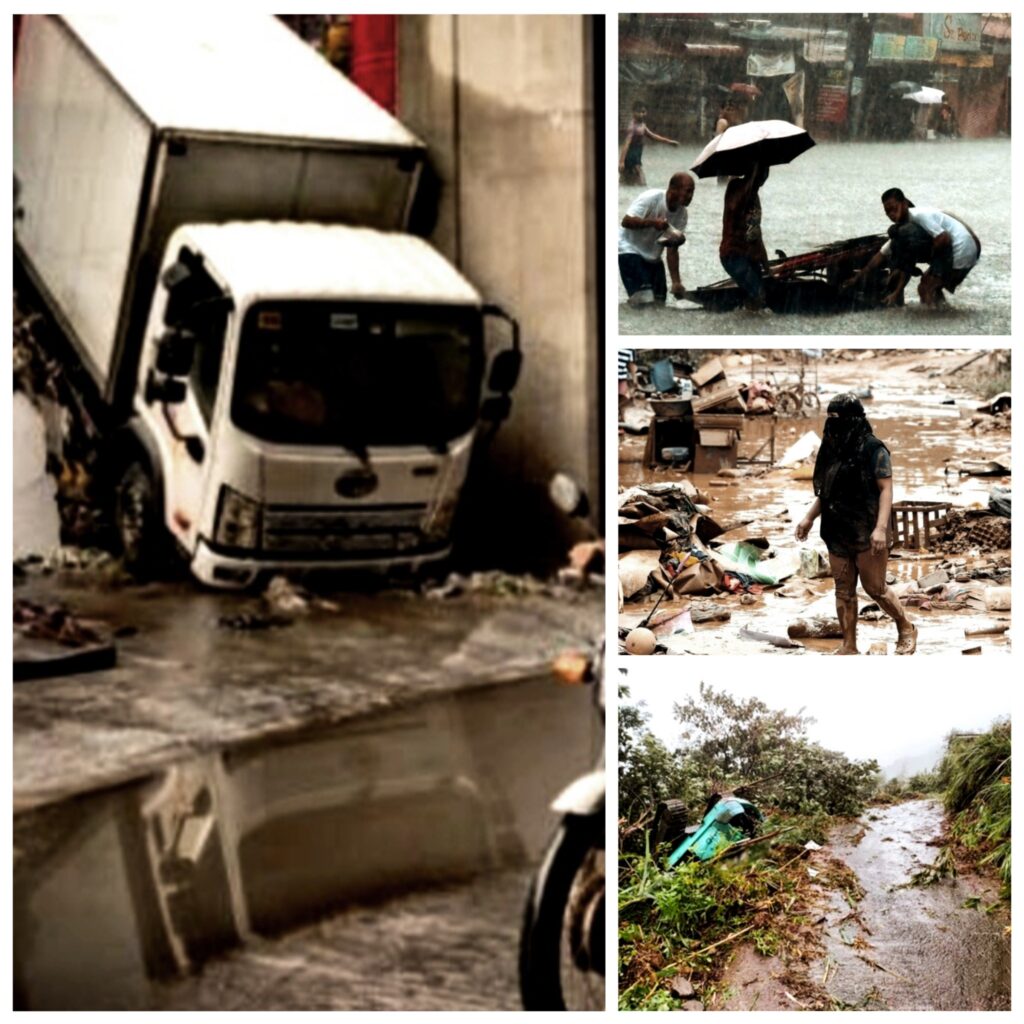Manashimaya

Typhoon Gaemi Strikes China Following Fatalities in Taiwan and the Philippines – a headline that has sent shockwaves across the region. After causing devastation in Taiwan and the Philippines, Typhoon Gaemi has now made landfall in mainland China. The south-eastern Chinese province of Fujian has seen more than 150,000 residents relocated to safer areas in anticipation of the storm’s impact.
The typhoon’s fury was felt in Taiwan and the Philippines, where it caused extensive floods and landslides that tragically claimed at least 21 lives. As the Philippines struggles to contain an oil spill, it is also facing an environmental crisis. A 1.5 million-liter industrial fuel tanker overturned and sank off the coast, posing a serious risk to the maritime environment.
The catastrophic events leading up to the headline Typhoon Gaemi Strikes China Following Fatalities in Taiwan and the Philippines are a stark reminder of nature’s fury. The Philippines was particularly hard-hit, with the storm intensifying seasonal monsoon rains, leading to severe flooding in Manila. The MT Terra Nova, a tanker en route to Iloilo, sank, taking 17 crew members with it. While 16 were rescued, the body of one crew member was recovered, highlighting the perilous conditions faced at sea.
China, bracing for the storm, activated its highest-tier disaster warning as Typhoon Gaemi approached on Thursday evening. President Xi Jinping chaired a crucial meeting with top Communist Party leaders to strategise flood control and disaster relief. In Fujian, train services have been suspended, and authorities in northern China have issued warnings about potential landslides and flooding, underscoring the severe risks associated with the typhoon.
The dramatic headline Typhoon Gaemi Strikes China Following Fatalities in Taiwan and the Philippines encapsulates a summer of extreme weather in China. The country is experiencing heavy downpours in the east and south, contrasted by scorching heatwaves in the north. Historically, China sees heavy rain from mid-July to mid-August, but this year’s weather has been particularly volatile. Typhoon Gaemi’s path closely mirrors that of Typhoon Doksuri from last year, which caused widespread flooding in northern China, though its exact route remains unpredictable.
Taiwan is currently undergoing a massive clean-up operation. The typhoon, the largest to strike the island in eight years, brought unprecedented rainfall. Over 1000mm of rain fell in various areas between Wednesday night and Thursday lunchtime, with the southern city of Kaohsiung recording 1350mm. The resulting floods left large parts of the city submerged under more than a metre of water, claiming three lives. A search and rescue operation continues for six Burmese sailors missing after their cargo ship, Fu Shun, sank off Taiwan’s northern coast.
The harrowing story behind Typhoon Gaemi Strikes China Following Fatalities in Taiwan and the Philippines also highlights the severe environmental impact. The Philippine Coast Guard is engaged in a massive operation to manage the oil spill caused by the sunken tanker, MT Terra Nova. The spill, stretching over four kilometres, threatens Manila Bay, a vital area for both commerce and the local ecosystem. Rear Admiral Armando Balilo warned of significant environmental damage if the spill is not contained promptly.
The tragedy that is developing serves as a sobering reminder of the necessity of strong environmental protection and catastrophe preparedness measures. The region’s overall reaction to Typhoon Gaemi will decide how resilient it is to future natural disasters and how much of a recovery it makes. There’s no doubt that the title Typhoon Gaemi Strikes China Following Fatalities in Taiwan and the Philippines will go down in the region’s climatic history as a momentous occasion.
